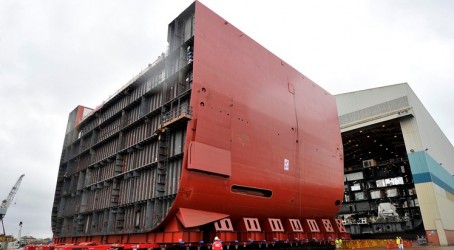Engineering news
One of the largest and most powerful warships ever built for the Royal Navy began to take shape this week as two massive sections of HMS Queen Elizabeth were joined together.
It took 90 minutes to move a 4,087-tonne section of the hull of the aircraft carrier 100m using 132 remote-controlled transporters to join another part of the ship at BAE Systems' Govan shipyard in Glasgow.
Workers will now spend the next week ensuring that the two parts are perfectly aligned before welding them together into an 80m-long, 11,500-tonne section.
Project director Steven Carroll said the move marked a major milestone in the construction. HMS Queen Elizabeth is one of two new aircraft carriers being built. He said: “These are the largest and most powerful warships we've ever built for the Royal Navy. They are 65,000 tonnes, so about three times the size of our present Invincible class. These ships will be the flagships for the nation for years to come.
“It's another chapter in a rich history of shipbuilding on the Clyde. It's a major engineering endeavour and one that we should be proud of as a nation.”
Carroll said up to 14,000 people are working on the project in construction, design, manufacturing and the supply of materials.
The hull section in Glasgow, which will house two engine rooms, a medical area and accommodation, will now be fitted out before being transported to Rosyth in the autumn to join up with the other sections of the ship which have been built in Portsmouth.
The ship is due to be completed by 2016, with the other aircraft carrier, HMS Prince of Wales, following later.
The ships are being delivered by the Aircraft Carrier Alliance, a partnership between BAE Systems, Thales UK, Babcock and the Ministry of Defence.
